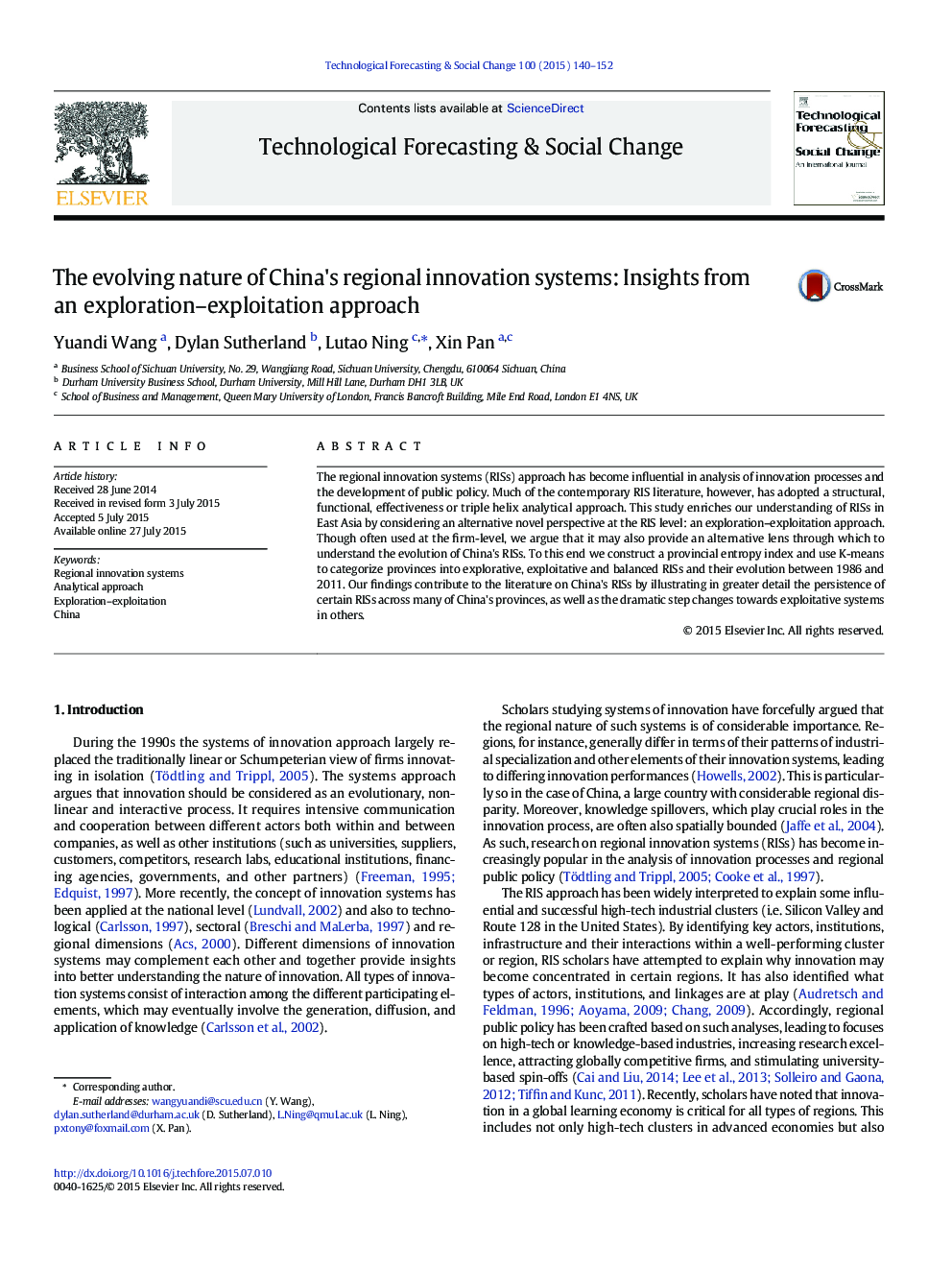| کد مقاله | کد نشریه | سال انتشار | مقاله انگلیسی | نسخه تمام متن |
|---|---|---|---|---|
| 896410 | 1472400 | 2015 | 13 صفحه PDF | دانلود رایگان |
• We use an exploration–exploitation approach to model China's regional innovation systems.
• We use the entropy index to categorize the systems by province.
• We find biases towards exploratory systems within the developed coastal provinces.
• A degree of persistence also exists across China's regional systems.
• Five systems have taken sudden backward step changes towards exploitative systems.
The regional innovation systems (RISs) approach has become influential in analysis of innovation processes and the development of public policy. Much of the contemporary RIS literature, however, has adopted a structural, functional, effectiveness or triple helix analytical approach. This study enriches our understanding of RISs in East Asia by considering an alternative novel perspective at the RIS level: an exploration–exploitation approach. Though often used at the firm-level, we argue that it may also provide an alternative lens through which to understand the evolution of China's RISs. To this end we construct a provincial entropy index and use K-means to categorize provinces into explorative, exploitative and balanced RISs and their evolution between 1986 and 2011. Our findings contribute to the literature on China's RISs by illustrating in greater detail the persistence of certain RISs across many of China's provinces, as well as the dramatic step changes towards exploitative systems in others.
Journal: Technological Forecasting and Social Change - Volume 100, November 2015, Pages 140–152
